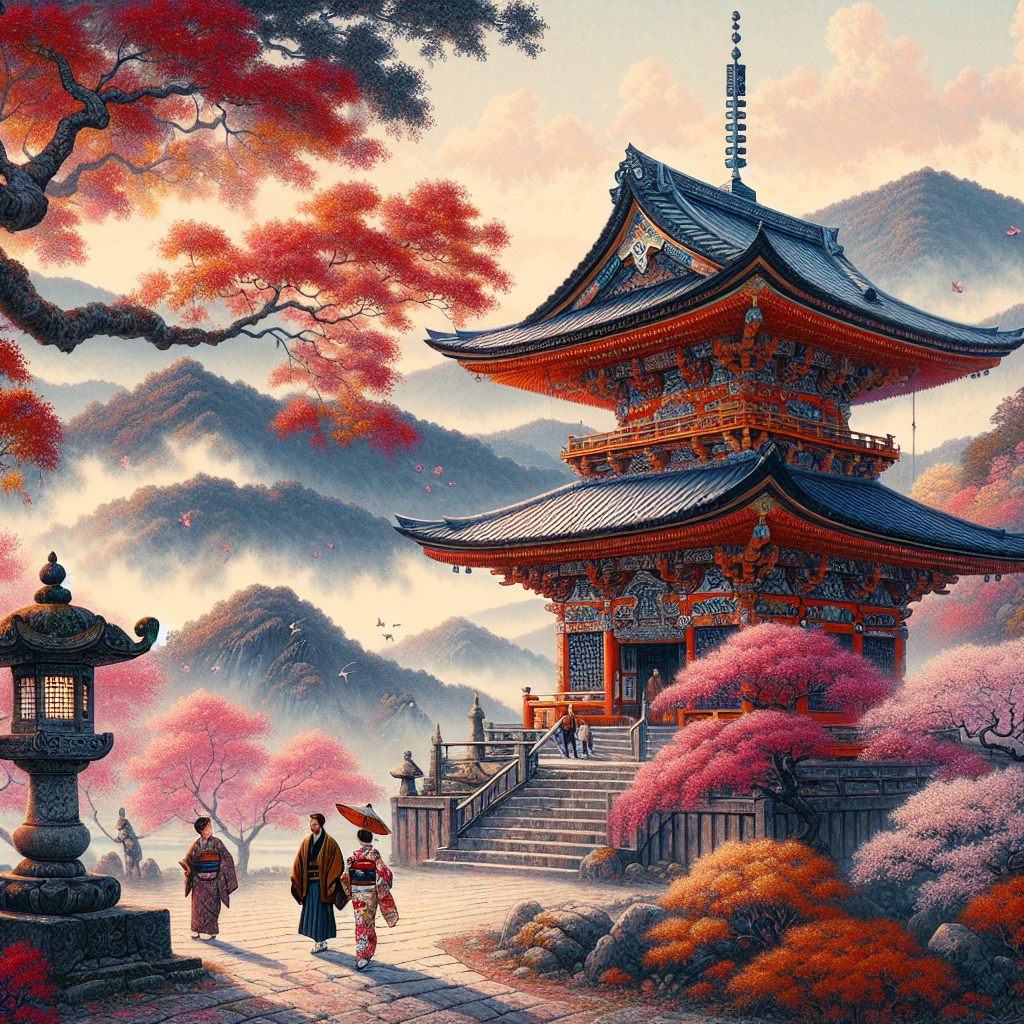
Kyoto – Japan
Kyoto: Japan’s Ancient Capital
Kyoto, Japan’s former imperial capital, is a city steeped in history and tradition. Located in the Kansai region of Japan, Kyoto is known for its well-preserved temples, shrines, and traditional wooden houses. With a population of over 1.5 million people, Kyoto is a bustling city that manages to balance its modern developments with its rich cultural heritage.
تاريخ
Founded in the 8th century, Kyoto served as the capital of Japan for over a thousand years until the capital was moved to Tokyo in the mid-19th century. During its time as the imperial capital, Kyoto was the center of Japanese culture, art, and politics. The city’s historic significance is evident in its numerous UNESCO World Heritage Sites, including the Kiyomizu-dera Temple, the Fushimi Inari Shrine, and the Kinkaku-ji Temple.
Culture
Kyoto is considered the cultural heart of Japan, and its traditional arts and crafts continue to thrive in the city. Visitors can witness traditional tea ceremonies, kimono fashion shows, and kabuki performances in Kyoto. The city is also famous for its geisha culture, with many geisha districts still active in Kyoto. Geishas, also known as geikos in Kyoto dialect, are skilled entertainers who are trained in traditional arts such as dance, music, and poetry.
Architecture
One of the most distinctive features of Kyoto is its traditional wooden houses, known as machiya. These narrow, two-story townhouses are characterized by their latticed windows, sliding doors, and tiled roofs. Many machiya have been preserved and converted into cafes, shops, and guesthouses, providing visitors with the opportunity to experience a traditional Japanese lifestyle. Kyoto is also home to numerous temples and shrines, including the iconic Kinkaku-ji Temple, also known as the Golden Pavilion, which is covered in gold leaf.
Gardens
Kyoto is renowned for its beautiful gardens, which are designed to reflect the natural landscape and evoke a sense of tranquility. The city’s most famous garden is the Ryoan-ji Temple’s rock garden, a minimalist arrangement of 15 rocks on a bed of raked gravel. Visitors can also explore the Kyoto Imperial Palace’s vast gardens, which feature ponds, bridges, and cherry blossom trees. During the spring, Kyoto’s gardens are filled with blooming cherry blossoms, creating a spectacular display of pink and white flowers.
Festivals
Throughout the year, Kyoto hosts numerous festivals that celebrate its rich cultural heritage. One of the most popular festivals is the Gion Matsuri, which takes place in July and features colorful parades, traditional performances, and food stalls. Another highlight is the Hanatoro festival, held in March, when the city’s temples and shrines are illuminated with thousands of lanterns. Visitors can also participate in tea ceremonies, calligraphy workshops, and sake tastings during Kyoto’s festivals.
Cuisine
Kyoto is a food lover’s paradise, with a diverse range of traditional dishes and international cuisine. The city is famous for its kaiseki ryori, a multi-course meal that emphasizes seasonal ingredients and delicate presentation. Visitors can also sample Kyoto-style sushi, tempura, and tofu dishes at local restaurants. Kyoto is also known for its matcha green tea, which is used in desserts such as matcha ice cream, matcha mochi, and matcha cakes.
التسوق
Kyoto is a shopper’s paradise, with a wide range of traditional crafts, textiles, and souvenirs available throughout the city. Visitors can browse for kimono fabrics and accessories in the Nishijin district, explore the antique shops in the Kamigyo-ku area, and purchase handmade ceramics in the Kiyomizu pottery district. Kyoto is also famous for its wooden crafts, including lacquerware, furniture, and tea utensils. Visitors can shop for unique souvenirs at the Kyoto Handicraft Center, which showcases the work of local artisans.
نصائح سفر
When visiting Kyoto, it is important to wear comfortable shoes, as the city’s streets are often uneven and hilly. Visitors should also be respectful of local customs, such as removing shoes before entering a temple or shrine. It is recommended to purchase a Kyoto City Bus One-Day Pass, which allows for unlimited travel on the city’s bus network. Additionally, visitors should be prepared for crowds during peak tourist seasons, such as cherry blossom season in the spring and autumn foliage season in the fall.
In conclusion, Kyoto is a city that seamlessly blends ancient traditions with modern developments. With its well-preserved temples, shrines, and traditional wooden houses, Kyoto offers visitors a glimpse into Japan’s rich cultural heritage. Whether exploring the city’s gardens, sampling its cuisine, or shopping for traditional crafts, Kyoto offers a unique and memorable experience for travelers.
